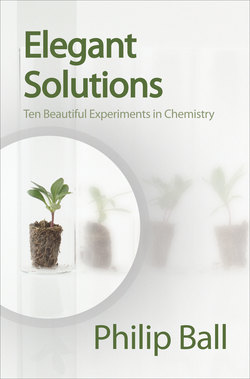Читать книгу Elegant Solutions - Philip Ball - Страница 6
На сайте Литреса книга снята с продажи.
ОглавлениеAcknowledgements
This book wasn’t my idea. Robert Eagling at the Royal Society of Chemistry proposed it to me, and I am grateful for the way he gently yet persistently encouraged me to take the project on. I, of course, bear full responsibility for the lacunae in the final choice of what the book contains. Tim Fishlock at the RSC helped the manuscript through its final stages.
I feel obliged to add a word of warning. I have always tried to ensure that my books can be understood without a scientific training, and this one is no exception to that. But dissecting some of these classic chemistry experiments necessarily takes us deeply into the structures and behaviours of atoms and molecules, and, at the risk of insulting the intelligence of the reader, it is perhaps fair to say that there are a few sections of the book that call for rather more effort from a lay audience than I have asked previously. If you have never before set eyes on a molecular structure, for example, you may find your eyes glazing around pages 169–172, and you should feel no guilt at passing quietly over them.
The immense generosity of several chemists has helped me to assemble the material and to iron out some of the most glaring errors. I am deeply grateful to Jeffrey Bada, Neil Bartlett, Albert Eschenmoser, Leo Paquette, Horst Prinzbach, Matthias Schädel and Claude Wintner for their assistance and comments.
While writing the book, I have had a sense that Oliver Sacks’ inspiring enthusiasm for chemistry and its history has somehow been in the air, and in gratitude for his encouragement, support and friendship over the past several years I would like to dedicate this book to him.
Philip Ball
London, February 2005
